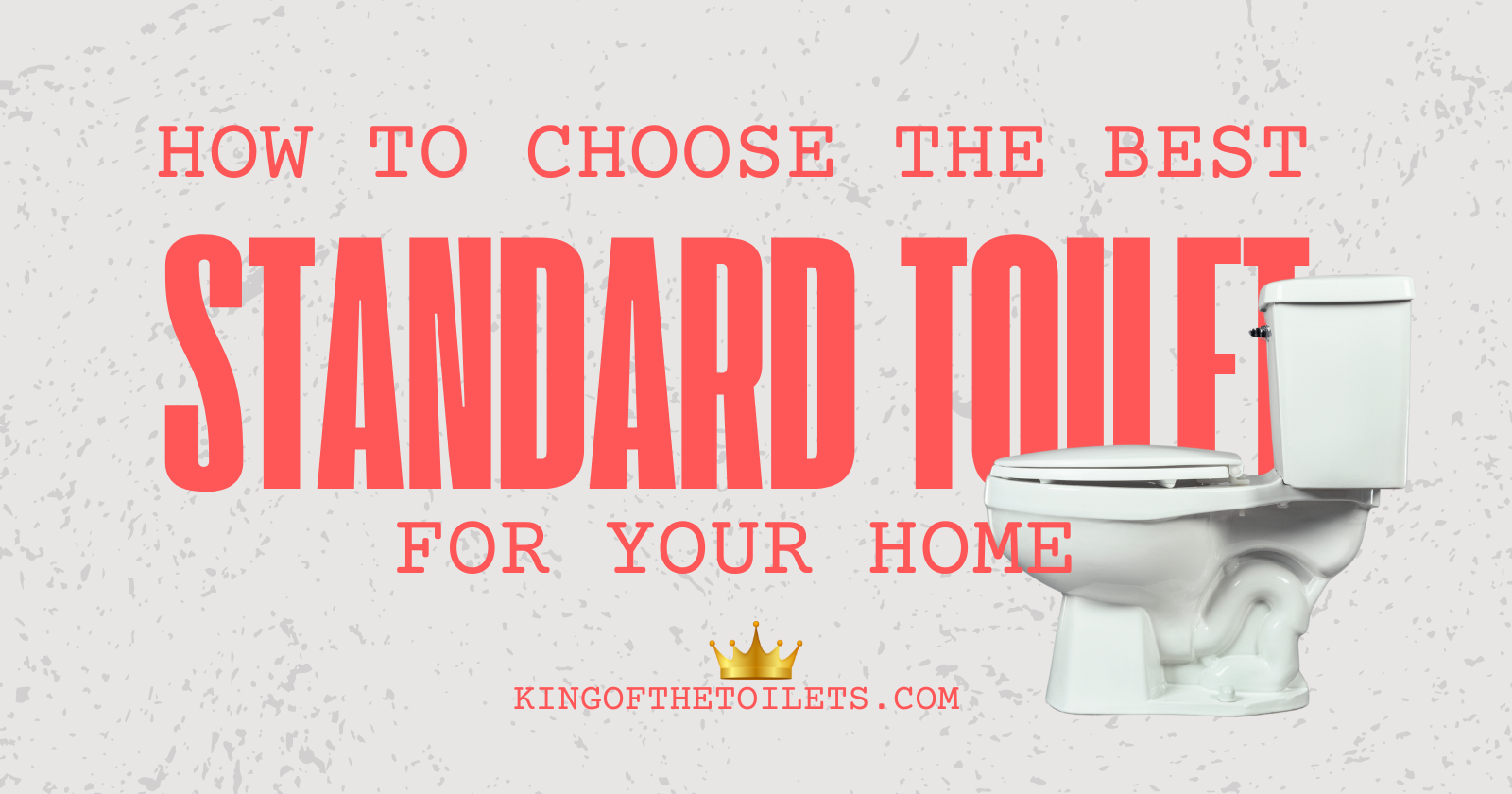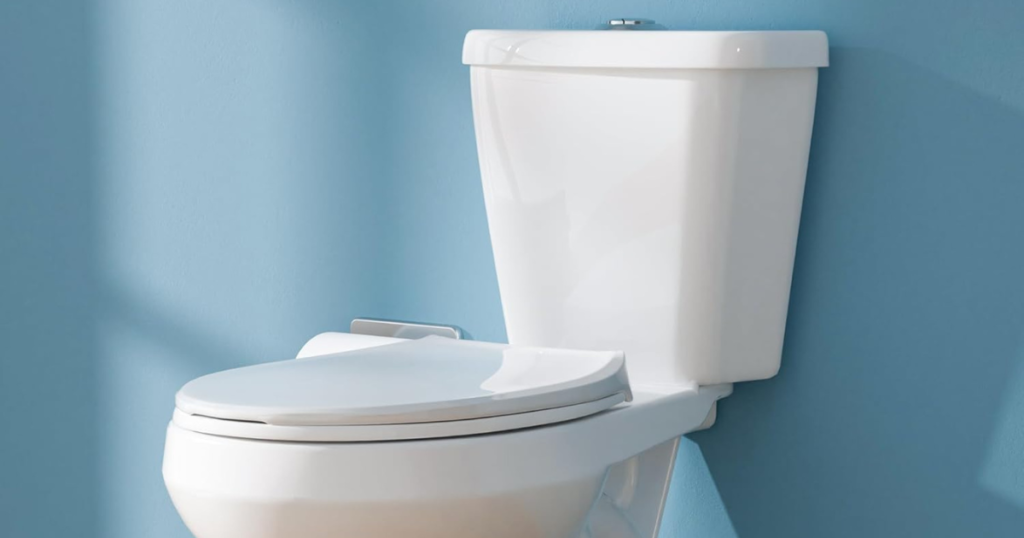
When choosing the right toilet for your home, it’s essential to understand the Standard Toilet Types available on the market.
This comprehensive guide will walk you through the standard toilet types, helping you make an informed decision that suits your needs and preferences.
Whether you’re looking for a traditional gravity-fed toilet, a modern dual-flush model, or something in between, this guide covers it all, ensuring you have the knowledge to select the perfect toilet for your bathroom.

Overview of Standard Toilet Types
Choosing the right toilet involves understanding various designs and flushing systems. Modern innovations offer numerous benefits, from enhanced performance to eco-friendly features.
Identifying Different Toilet Designs
Toilets come in a variety of designs and shapes to suit different needs and preferences.
The most common designs include:
- Two-Piece Toilets: These have a separate tank and bowl.
- One-Piece Toilets: These are single, seamless units that are easier to clean.
- Wall-Mounted Toilets: Attached to the wall, saving floor space.
- Compact Toilets: Designed for smaller bathrooms.
Each design offers unique style and functional benefits, allowing you to choose based on space, ease of cleaning, and aesthetics.
Comparing Flushing Systems
Flushing systems are crucial for a toilet’s performance. The main types are:
- Gravity Flush: It uses gravity to push water down and is simple and reliable.
- Pressure-Assisted Flush: Uses compressed air for a powerful flush, preventing clogs.
- Dual Flush: Offers two flush options, light for liquids, and full for solids, saving water.
These systems vary in water efficiency and noise level, impacting both environmental impact and user comfort.
Innovations in Modern Toilets
Modern toilets include advanced features and technologies that improve comfort and efficiency. Some notable innovations are:
- Eco-Friendly Toilets: Designed to minimize water use, some use less than 1.28 gallons per flush.
- Smart Toilets: Include features like heated seats, built-in bidets, and automatic flushing.
- Touchless Flush: Sensors detect when to flush, enhancing hygiene.
These innovations not only add convenience but also support sustainable living by reducing water consumption and enhancing overall toilet performance.

Choosing the Right Toilet for Your Bathroom
Selecting the perfect toilet for your bathroom involves considering various factors such as size, shape, height, comfort, and installation space.
Your choice should balance practical needs and personal preferences while accommodating the bathroom’s design and space.
Evaluating Toilet Sizes and Shapes
Toilets come in different sizes and shapes, catering to various bathroom layouts.
Round bowls are compact and fit well in small bathrooms. They typically measure about 16.5 inches from the back to the front.
Meanwhile, elongated bowls offer more comfort and are about 18.5 inches long.
As for the toilet itself, wall-mounted toilets are great for saving floor space but might be pricier due to extra installation requirements.
Two-piece toilets, in which the tank and bowl are separate pieces, are common and budget-friendly. On the other hand, one-piece toilets, in which the tank and bowl are fused together, are sleeker and easier to clean.
Understanding Height and Comfort
Toilet height significantly affects comfort.
Standard-height toilets are around 15 inches from floor to seat, suitable for most users. However, comfort-height (or chair-height) toilets are between 17 and 19 inches, making them easier to sit on and stand up from, especially for elderly or taller individuals.
Consider the toilet seat, too.
Soft close seats prevent slamming, and heated seats add extra comfort in colder climates. Meanwhile, bidet attachments or integrated bidets can enhance hygiene.
Lastly, dual-flush toilets have two flush options, conserving water efficiently while maintaining good performance.
Considering Installation and Space
Installation depends on your bathroom’s layout and size.
Standard rough-in measurements are typically 12 inches, though alternatives like 10 or 14 inches exist. Make sure to measure accurately to avoid installation issues.
For tight spaces, corner toilets and wall-hung models can save crucial room.
Lastly, make sure to check the trapway design. Exposed trapways are easier to clean but can be less aesthetic. Meanwhile, hidden trapways offer a streamlined look and are easier to clean.
Water efficiency is crucial, too.
Low-flow toilets use less water per flush, reducing your water bill.
Meanwhile, consider modern features like touchless flush for added convenience and hygiene.
Lastly, classic gravity flush systems are reliable and easy to maintain, making them a popular choice for many households.

Advanced Toilet Features and Benefits
When upgrading a toilet, modern features can provide significant benefits. From eco-friendly options to advanced technology integration, these enhancements can improve efficiency, comfort, and convenience in your bathroom.
Exploring Eco-Friendly Options
Today’s toilets often come with water-saving features that help conserve resources.
Dual-flush toilets, for instance, allow you to choose between a low or full flush depending on the waste, reducing water use.
Waterless toilets are another eco-friendly option. These toilets don’t use water for flushing and are ideal for areas where water conservation is critical.
Meanwhile, pressure-assisted toilets use pressurized air to enhance flushing power while using less water compared to traditional gravity-flush toilets. These toilets also prevent clogs more effectively.
Assessing Additional Functionality
Toilets come with a variety of added functionalities that can cater to specific needs.
Comfort-height toilets are taller than standard models, making them easier for adults and those with mobility issues to use.
Many toilets can be built with bidet functionality, offering a higher level of cleanliness and hygiene. Some models even include features like heated seats, adjustable water pressure, and temperature settings.
Lastly, touchless flush toilets allow users to flush with a simple hand wave, reducing the spread of germs.
Integrating Advanced Technology
Modern technology has transformed toilets into high-tech fixtures. Smart toilets can include things like automatic lids, seat warmers, and even night lights.
Some models also offer self-cleaning features, moving beyond just manual cleaning.
Wall-mount toilets contribute to a sleek, contemporary look, make cleaning the bathroom floor easier, and can save space in smaller bathrooms.
To measure performance, MAP score (Maximum Performance testing) ratings help you understand a toilet’s efficiency in waste removal. This ensures you choose a model that performs reliably.
Advanced features can not only enhance your bathroom’s functionality but can also significantly boost your home’s value during remodeling projects.
Whether you’re looking for better comfort, hygiene, or cutting-edge technology, these advanced toilet features offer a range of benefits suitable for various needs.

Wrapping Up
By now, you should have a clear understanding of the different standard toilet types and their unique features. Armed with this knowledge, you can confidently choose the best option for your home, balancing functionality, style, and efficiency.
Remember, the right toilet can significantly improve your daily comfort and long-term water savings. Whether you opt for a classic design or a modern innovation, your informed choice will contribute to a better bathroom experience.
What is a standard toilet?
Toilet height is measured from the floor to the top of the seat. Most often, toilets fall somewhere between 15″ and 19″, with standard toilets coming in under 17″. Chair-height toilets measure 17″ or more.
